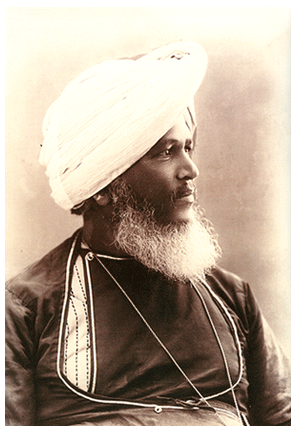- Prelude
- Editorial
- Raghu Rai: The Historian
- Ryan Lobo, 34 in Baghdad
- Through the Eye of a Lensman
- Adrian Fisk
- And Quiet Flows the River
- The Lady in the Rough Crowd: Archiving India with Homai Vyarawalla
- Raja Deen Dayal:: Glimpses into his Life and Work
- Raja Deen Dayal (1844-1905) Background
- Vintage Views of India by Bourne & Shepherd
- The Outsiders
- Kenduli Baul Mela, 2008
- Collecting Photography in an International Context
- Critical Perspectives on Photograph(y)
- The Alkazi Collection of Photography: Archiving and Exhibiting Visual Histories
- Looking Back at Tasveer's Fifth Season
- Kodachrome: A Photography Icon
- Three Dreams or Three Nations? 150 Years of Photography in India, Pakistan and Bangladesh
- Show And Tell – Exploring Contemporary Photographic Practice through PIX
- Vintage Cameras
- Photo Synthesis
- The Right Way to Invest
- What Happened and What's Forthcoming
- Art Events Kolkata: March – April 2011
- Art Bengaluru
- Mumbai Art Sighting
- North East Opsis
- Previews
- In the News
- Somnath Hore
ART news & views
Raja Deen Dayal:: Glimpses into his Life and Work
Volume: 3 Issue No: 16 Month: 5 Year: 2011
by Jyotindra Jain
 Born in 1844 to a middle-class Jain family from Sardhana, near Meerut in today's Uttar Pradesh, Deen Dayal studied at the Thompson Civil Engineering College in Roorkee where he completed a five-year course. In 1854, photography was introduced as a subject in the college, where Deen Dayal perhaps first developed an interest in it.
Born in 1844 to a middle-class Jain family from Sardhana, near Meerut in today's Uttar Pradesh, Deen Dayal studied at the Thompson Civil Engineering College in Roorkee where he completed a five-year course. In 1854, photography was introduced as a subject in the college, where Deen Dayal perhaps first developed an interest in it.
On completing his studies, Deen Dayal became head estimator and draftsman in the Public Works Department of the princely state of Indore. He continued to hold a government post long after leaving Indore (for over a decade) and even after being in the service of the Nizam of Hyderabad, which speaks of the importance he attached to government service as a source of influence for his vocation.
Both as civil engineer at the Indore Public Works Department and as amateur photographer, Deen Dayal apparently attracted the attention of Tukoji Rao II, the Maharaja of Indore as well as of Sir Henry Daly in the mid-1870s. Through Daly's help Deen Dayal secured an opportunity to photograph Lord Northbrook, the Viceroy of India, and, soon after that, the royal party of the Prince of Wales during their visit to Indore. This brought Deen Dayal recognition as a photographer of merit. Already in 1874, Deen Dayal had opened a commercial studio in Indore.
It was around this time (1882-84) that he came into contact with Sir Lepel Griffin of the Bengal Civil Service, who at that time was posted in Central India. Deen Dayal was commissioned by Sir Lepel to join him on his mission to document monuments of the architectural heritage of Central India. It was during this tour that Deen Dayal photographed the temples, forts and palaces at Gwalior, Orchha, Khajuraho, Sanchijhansi, Deegh, Indore, Omkareswar, etc. With the inclusion of 86 photographs from this tour in Sir Lepel's 1886 monograph, Famous Monuments of Central India, Deen Dayal became firmly established as a much sought-after photographer for the documentation of archaeological monuments. As a result, the Archaeological Survey of India became his great patron.

In the following years Deen Dayal worked as official photographer to several Viceroys, including Lord Dufferin and Earl Elgin. In 1887 he received the Royal Warrant of Appointment as Photographer to Her Majesty, the Queen (Victoria). Among several honours bestowed on Deen Dayal, special importance was attached to a medal and certificate that he received at the World's Columbian Exposition in 1893.
From 1885 onwards, Deen Dayal worked as photographer at the court of the Sixth Nizam of Hyderabad, where he remained until his death in 1905, except for intermittent periods of absence while conducting field tours or visiting Indore and Mumbai to look after his establishments there. In 1886 he opened his studio, Deen Dayal & Sons, Secunderabad, where he maintained a staff of fifty for various technical jobs. In 1892 he even opened a Zenana Studio in Hyderabad where one Mrs. Kenny Levick photographed "native ladies only" protecting them "from the gaze of the profane and the stern".
It was during these Nizam years that Deen Dayal's work reached a zenith in the art of photography as well as in creating an exhaustive visual archive of the lifestyle of the Sixth Nizam of Hyderabad. In appreciation of his work, the Nizam bestowed upon him the title of "Raja" in 1894.
The same year Deen Dayal closed his Indore Studio and opened a deluxe salon in Mumbai. Called Raja Deen Dayal and Sons: Art Photographic Salon, it was located at 132, Hornby Road in the Fort Area and was mainly run by his son Gyan Chand. In 1903 Deen Dayal went to Delhi with the Nizam to cover the Delhi Durbar where he took some exquisite photographs of the event.
Raja Lala Deen Dayal died in 1905 in Mumbai (erstwhile Bombay).
Images & Article Courtesy: IGNCA, New Delhi